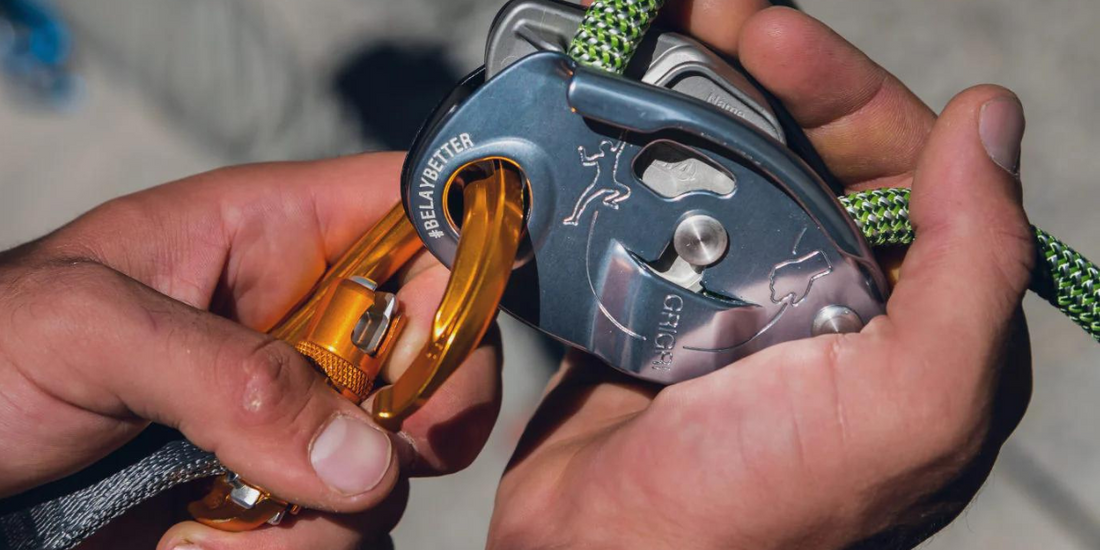1. Understand the Types:
Tubular Belay Devices:
Best for: Multipitch trad climbing, sport climbing, gym climbing.
Advantages: Compact, lightweight, versatile with various rope diameters,suitable for rappelling on two strands.
Considerations: Some may find them slower for rappelling, especially lightweight climbers.
Our most recommended belay device: Petzl Reverso
Assisted-Braking Belay Devices:

Best for: Sport climbing, gym climbing, multipitch trad climbing.
Advantages: Automatically locks down on the rope in case of a fall, feeds rope smoothly, some allow controlled lowering.
Considerations: Heavier than tubular devices, may not work with all rope diameters, some only allow rappelling on a single strand.Our most recommended assisted belay device: Petzl GriGri
Figure 8 Belay Device:

Best for: Search and rescue, caving, rappelling.
Advantages: Efficient for rappelling, dissipates heat well, compatible with various rope diameters.
Considerations: Requires more force from the belayer, puts a twist in the rope.
2. Consider Your Climbing Needs:
Type of Climbing: Choose based on whether you primarily do sport climbing, multipitch trad climbing, or need a device for rappelling.
Weight and Portability: If you're hiking long distances to climb, consider the weight and compactness of the device.
Rope Compatibility: Ensure the device is compatible with the diameter of the ropes you typically use.
3. Evaluate Features:
Assisted-Braking Mechanism: Decide if you need a device that offers assisted braking for lead climbing or multipitch scenarios.
Ease of Use: Consider how intuitive the device is to use, especially under stress during a fall or rappel.
Versatility: Some devices can be used both for belaying and rappelling, while others are more specialized.
4. Check Manufacturer Recommendations:
Follow the manufacturer's guidelines for rope compatibility and proper usage techniques.
Ensure you understand how to set up and use the device correctly before your climb.
5. Seek Expert Advice:
If you're unsure, consult with experienced climbers or instructors who can provide personalized recommendations based on your specific climbing style and needs.
Conclusion: Choosing the right belay device in India depends on understanding the type of climbing you do, the features you prioritize, and ensuring compatibility with your equipment and techniques. Always prioritize safety and proper training in using your chosen device.
This guide aims to help climbers in India make informed decisions when selecting a belay device suited to their climbing adventures, including those preparing for a ROCK CLIMBING COURSE.


